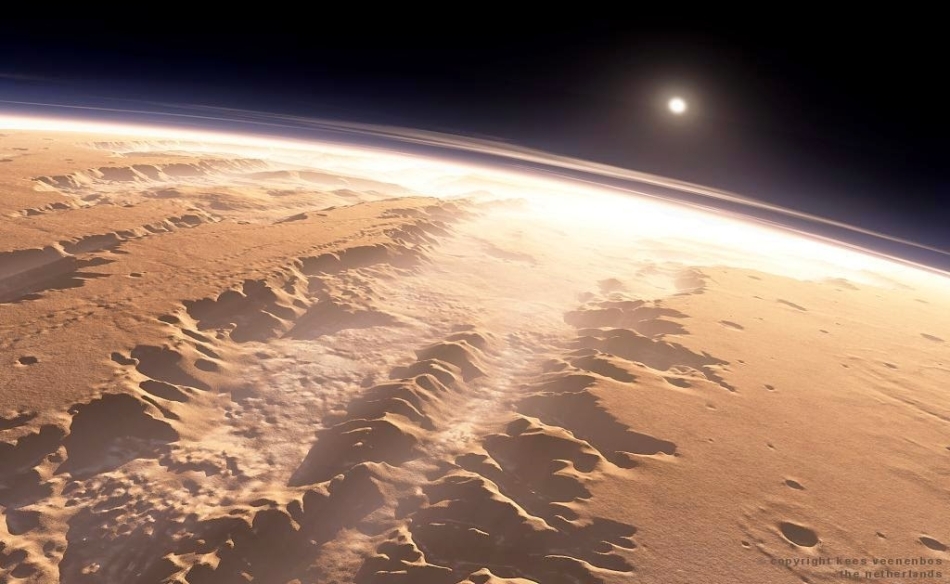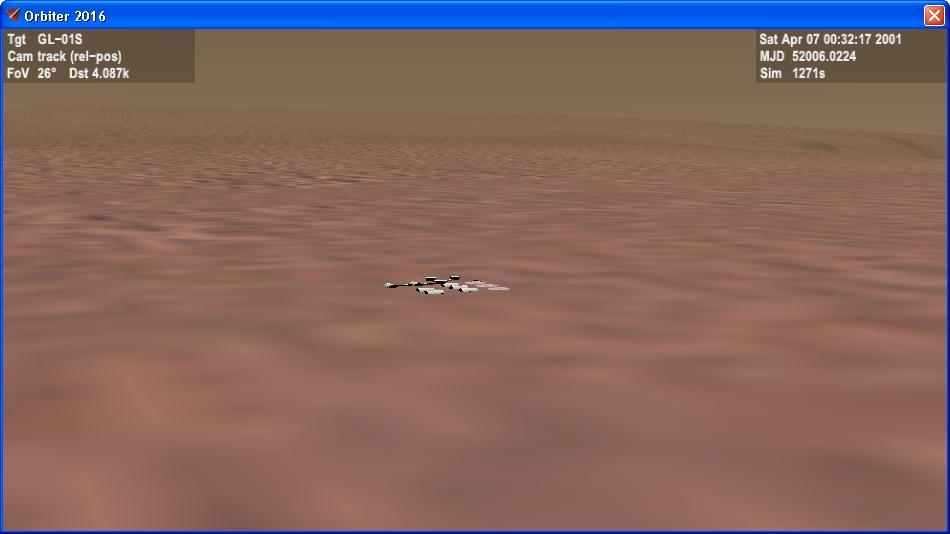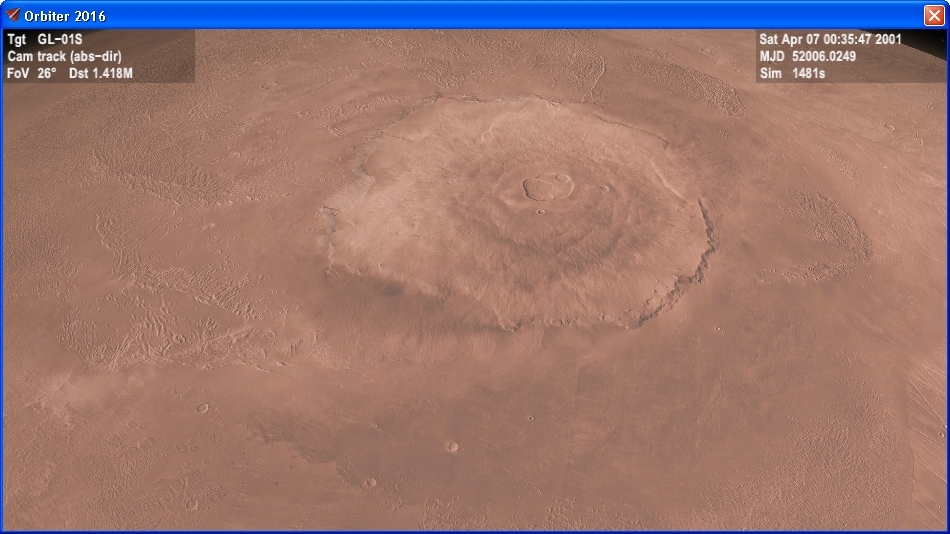Flying over the Mariner Valley

If during the New Year holidays, the weather has completely deteriorated, and you can’t look at the celestial beauties, then there are at least two interesting options. You can open any of the rather large set of programs, planetariums. And you can, having gathered courage, to overcome the non-zero threshold of entry and learn how to fly with honest Newtonian physics in Orbiter. Fortunately, except for a week of rest, there is an excellent reason - this year, after a six-year break, a new version was released.
What it is
Orbiter is a space simulator, which since 2000 has been developed by one person - Martin Schweiger, who works at University College London. The game is officially free, but its source code is proprietary. Due to the fact that one person is physically unable to develop quickly, major releases share years, the previous two were in 2010 and 2006. At the same time, the game is open to add-ons and modifications and has gathered around itself a large number of enthusiasts who create free add-ons with ships, multi-function displays and other things.
New
')
The main "trick" of the release of 2016 is an honest relief. In previous versions of the planet were ideal areas without mountains and depressions. But now, according to the data of satellites and interplanetary stations, the relief of the Earth and other celestial bodies has been built. The only negative is that detailed elevation maps take up a lot of space, and Orbiter with installed high resolution maps weighs more than 50 GB. Along with the added support for DirectX above 7.0 it turns out quite nice picture.
On Earth, the Alps have now become full-fledged mountains.

On the moon, the fantastic spaceport, Brighton Beach, located in the Rainbow Bay, is now visible against the backdrop of the Jurassic Mountains.

Landing area "Apollo 17".

And the same area with the movement of astronauts.

Unofficial Mount Marilyn, named by astronaut Jim Lowell (Apollo 8 and 13) after his wife.

Fast forward to Mars. Here is a fantastic base "Olympus" near the mountain of the same name.

Olympus looks much better from afar.

But the valley of Mariner at dawn.

The central peak of Reyasilvius on Vesta, one of the largest mountains in the solar system, is also part of one of the largest craters.

In addition to the relief, improved support for third-party graphic clients, which make the picture even better. Reworked physics engine algorithms, critical frames are now allocated for separate processing, which improved the physics of collisions.
Of course, improvements have a downside - the compatibility of most add-ons is gone. Due to the change in the algorithm for creating and calculating rocket parts, even in designated as compatible add-ons, the rocket can fall down a little immediately after the launch, and, for example, the autopilot of the Space Shuttle in the first seconds of flight drops solid propellant accelerators, making it impossible to start. The Trace Gas Orbiter addon, designated as compatible, crashes when trying to switch to the first-person mode at the “Proton” launching stage and breaks the Schiaparelli probe about Mars, aiming at the zero-elevation point at which the surface was in the 2010 version. In Orbiter 2016, at the landing site, the relief is lower, the probe spends fuel in vain and falls. What irony is the collapse of the real Schiaparelli due to the incorrect height estimation of the on-board computer. Fly normally while you can only on the ships by default - Delta Glider, Dragonfly, Shuttle-A. But over time, enthusiasts will adapt their add-ons to the new version and write new ones, the project ecosystem is alive.
Additional materials
Download Orbiter can be free from the official site .
A relatively simple explanation of orbital mechanics is in my lecture “Heavenly mechanics without a single formula”
Many publications with different flights in the 2010 version of the Orbiter tag .
Source: https://habr.com/ru/post/400421/
All Articles